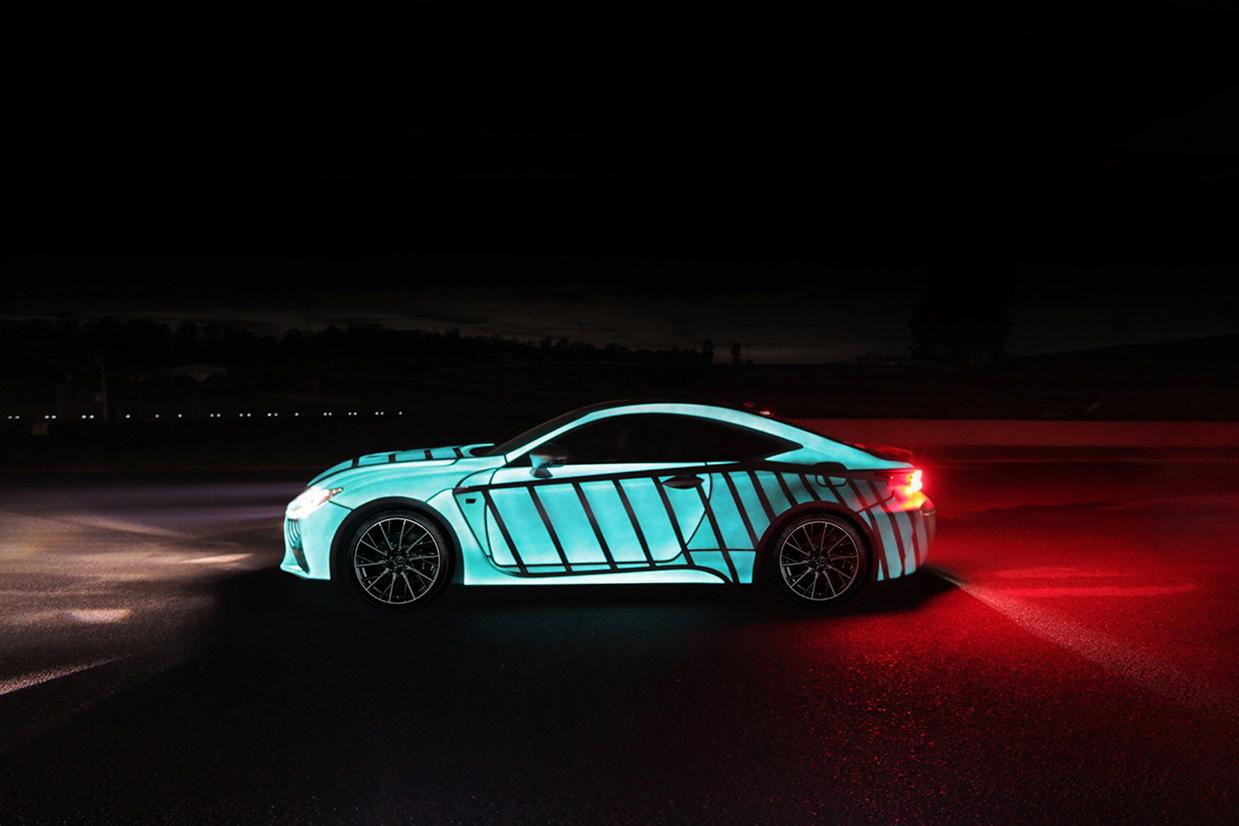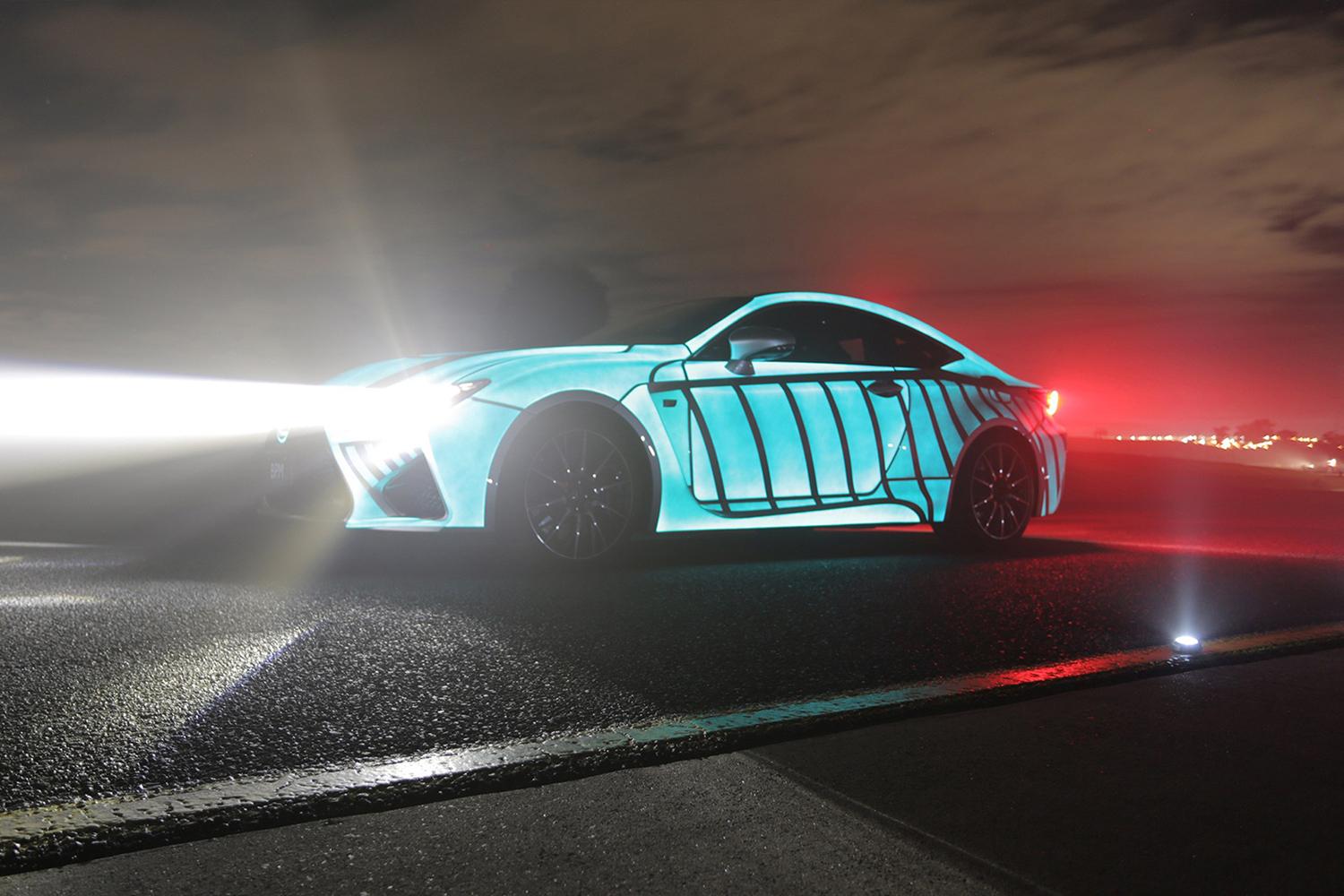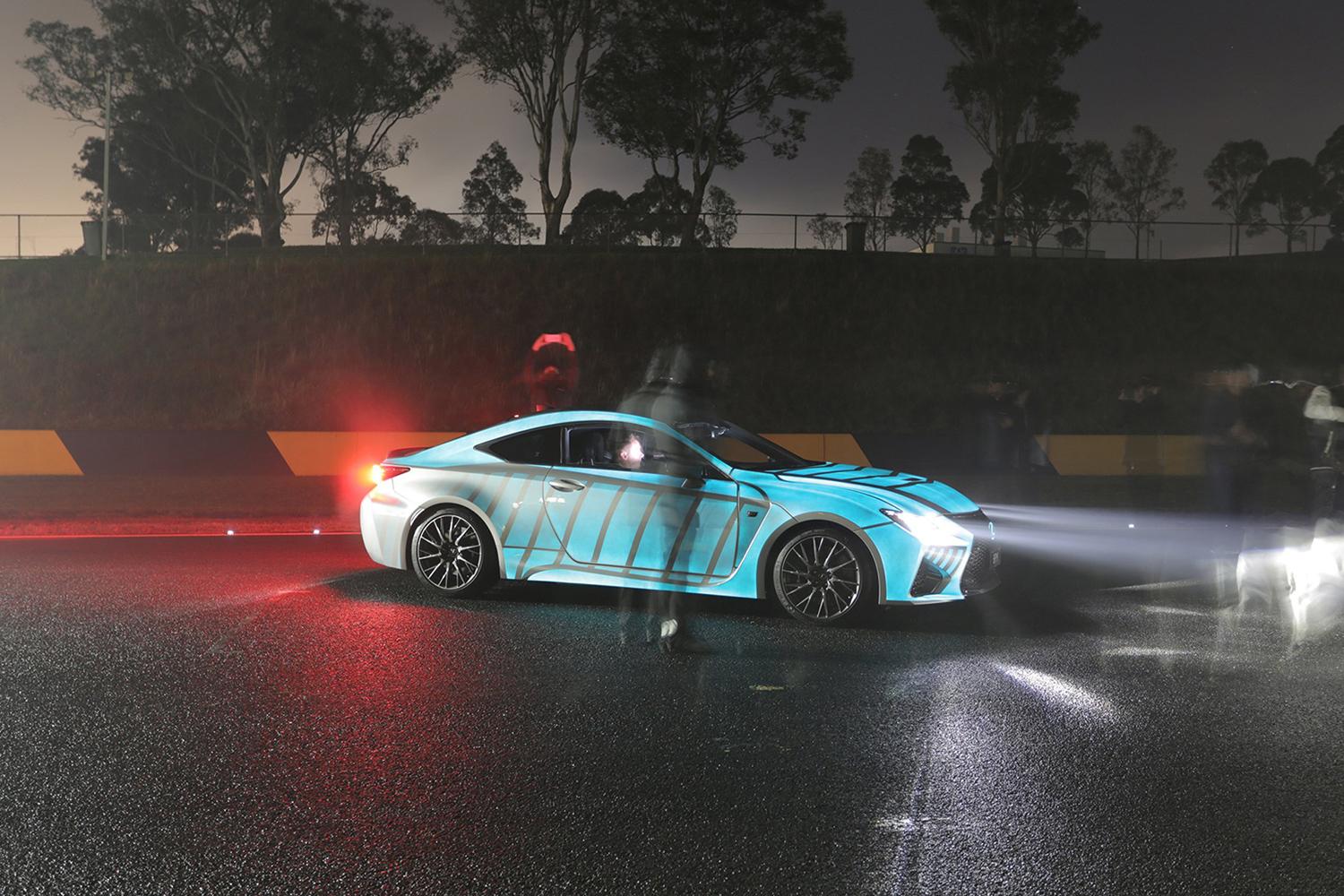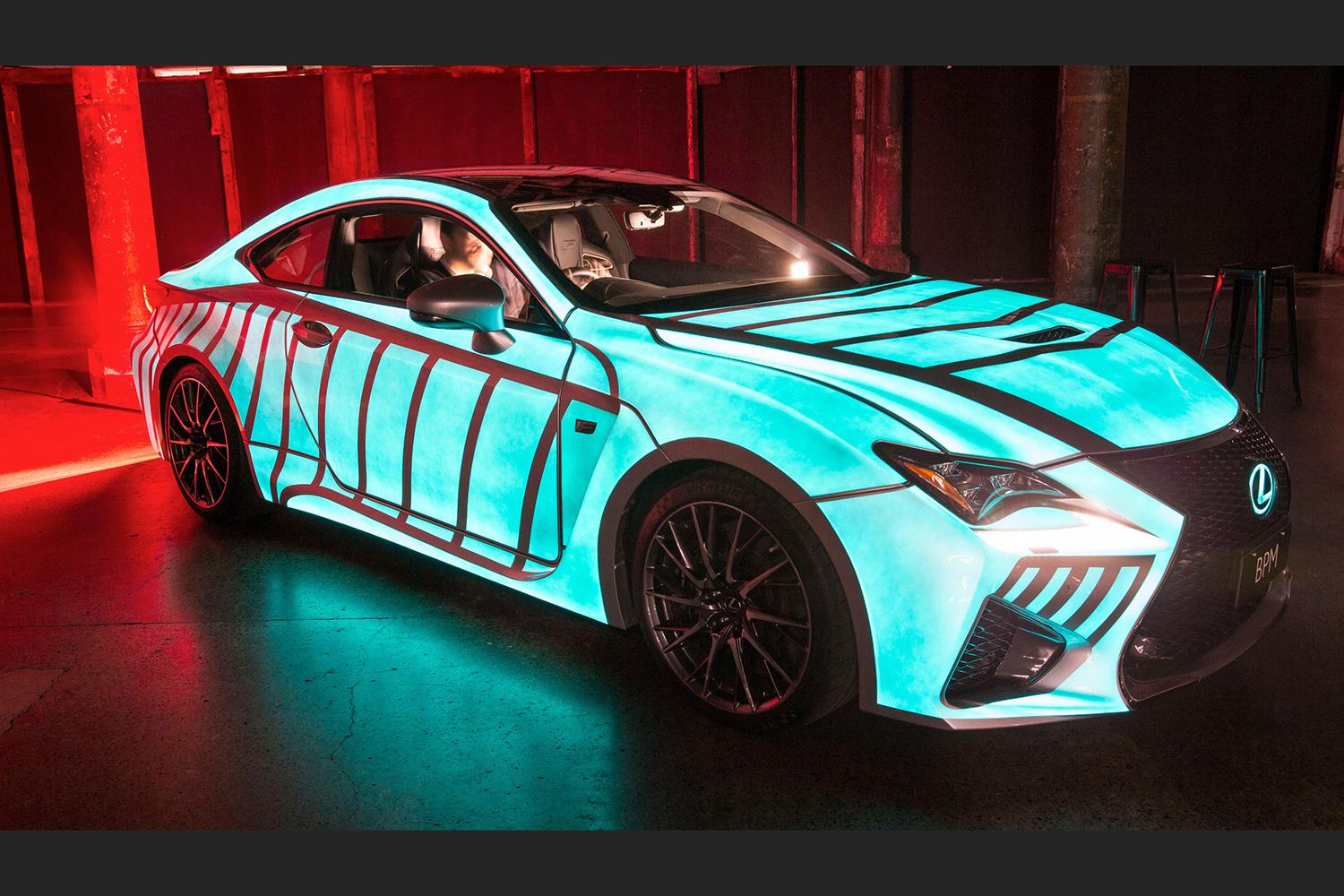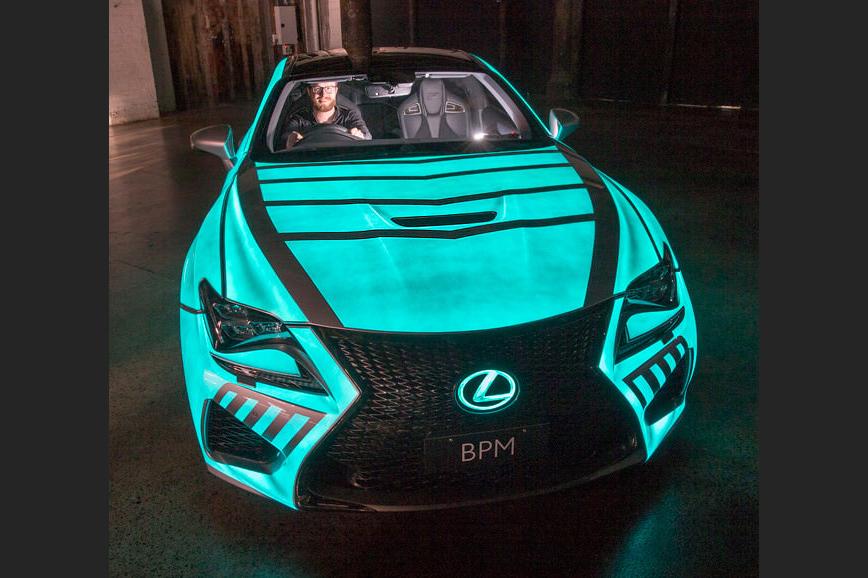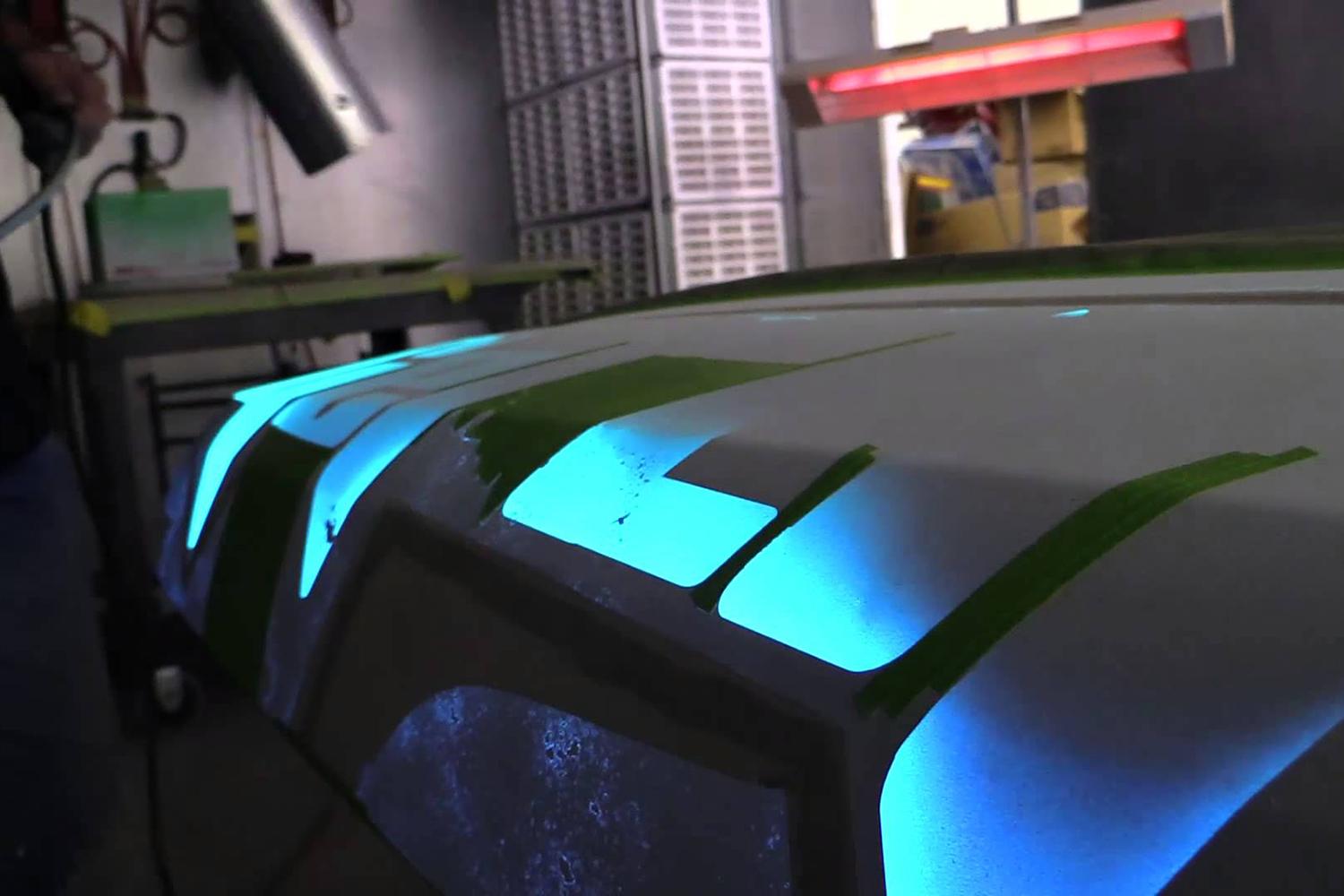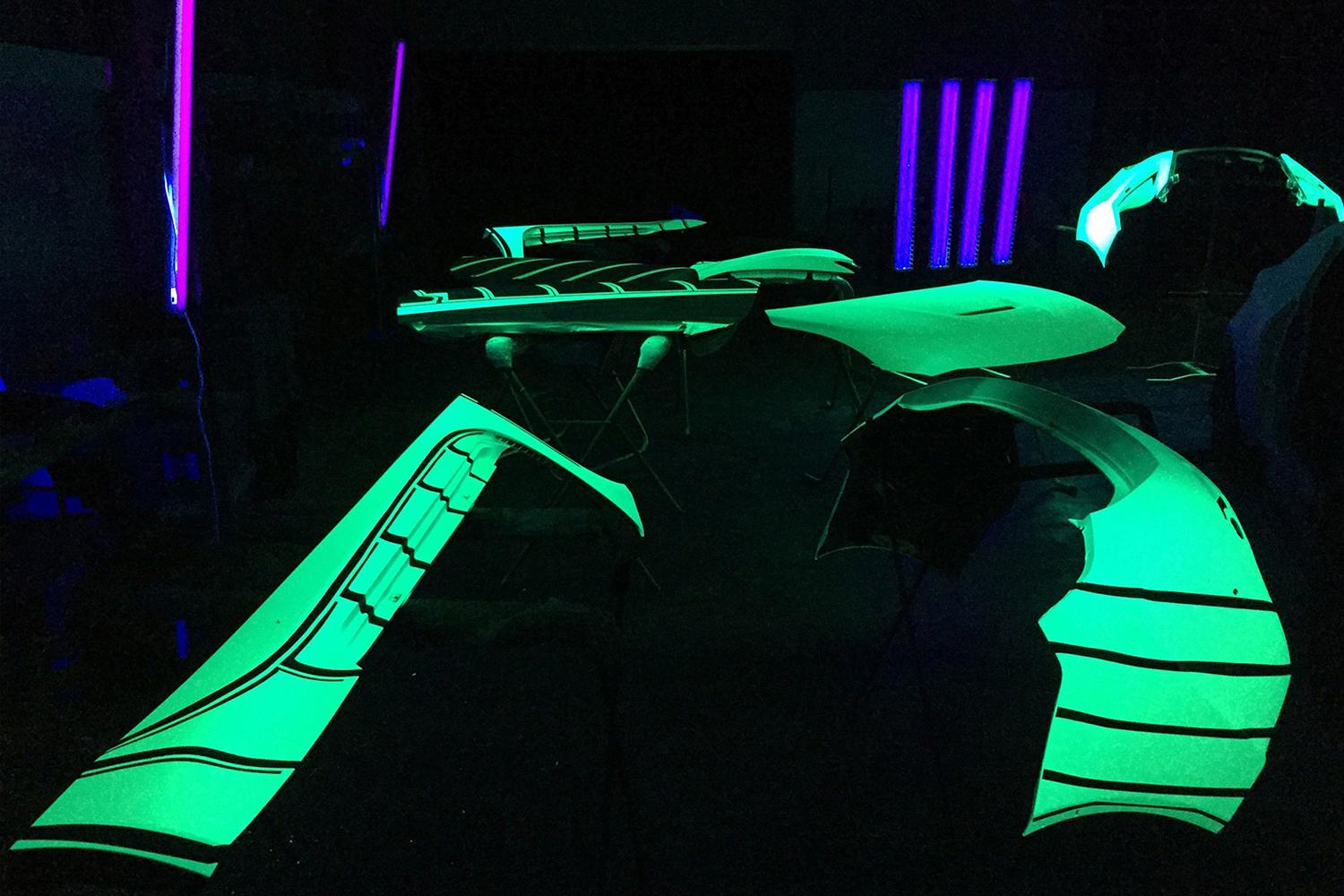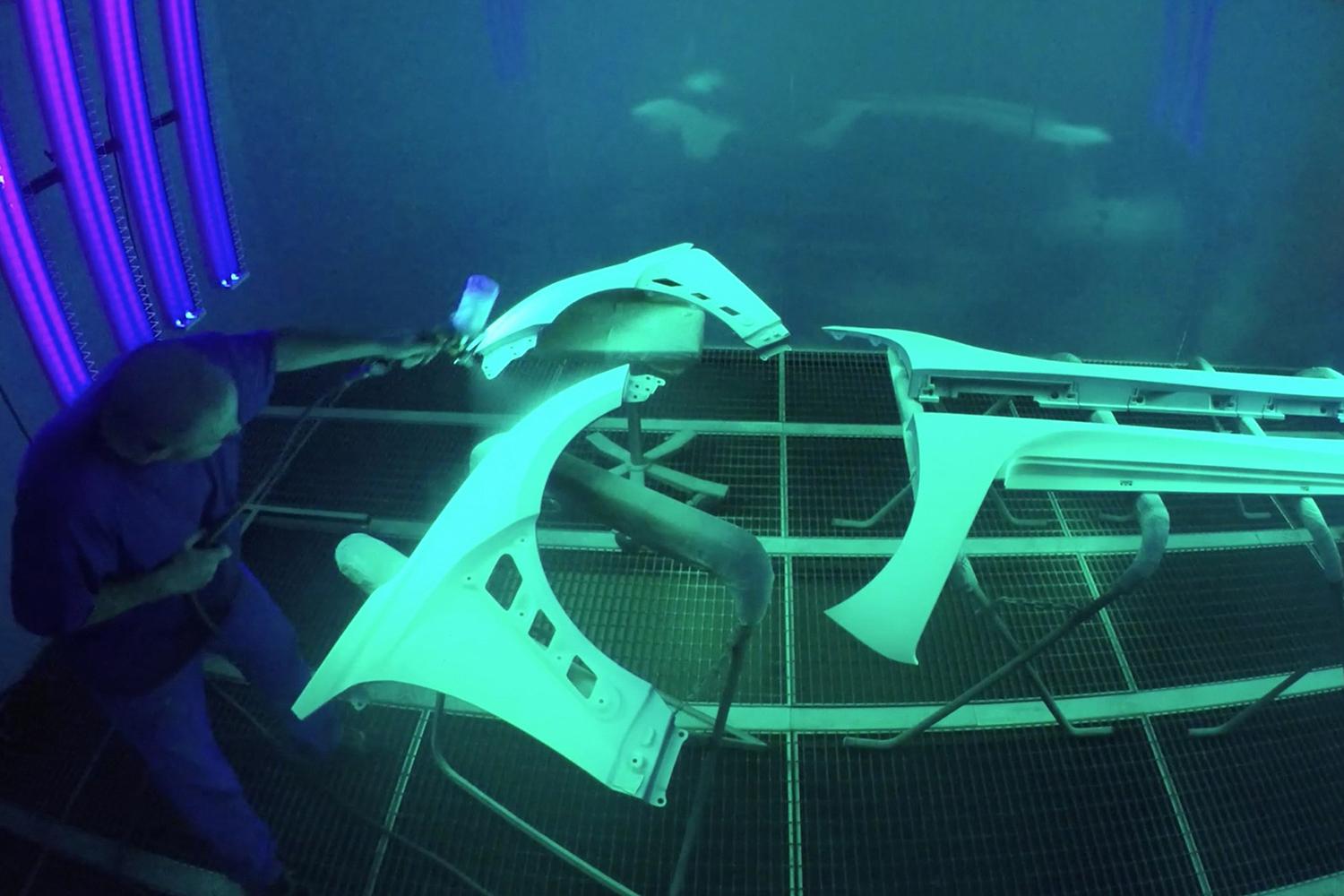Lexus recently teamed up with an Australian agency called Tricky Jigsaw to create the first vehicle with a real-time heartbeat, giving the outside world a unique perspective of the driver’s condition inside.
It all started with Lexus’ RC F coupe, a 467-horsepower V8 dynamo that’s pretty exciting in its own right. Then Tricky Jigsaw — a technological innovation sector of Australian firm M&C Saatchi — got a hold of some Lumilor paint, a unique material that responds to an electric current. With the occupant wearing a wireless heart rate monitor, the vehicle’s shell reacts, pulses, and glows in tune with the driver’s cardiac cycle. The lucky dogs over at Techly were invited to test the technology, and clearly, they didn’t skip a beat.
The process was not easy. The whole endeavor took six months, and involved scads of custom work and engineering knowhow. First, the car’s body was disassembled into its individual sections and slathered in Lumilor. Then, each panel was assigned a specific animation sequence — governed by a bespoke circuit board — and connected to an Arduino processor. With the heartbeat monitor hooked up, you’re left with a vehicle that seems alive.
We’ve seen countless amazing paint jobs before, even one that transforms into The Incredible Hulk when exposed to hot water, but this one has to take the cake. It’s part eerie, part disarming, but altogether technologically impressive and just plain cool.
The RC F was chosen not just for its dramatic looks, but for its dynamic performance. A humdrum commuter car doesn’t really raise the pulse after all, but with a screaming 5.0-liter V8 on tap, that clearly won’t be a problem for the Lexus.
The car also features a trick torque vectoring differential that employs electronic motors and actuators to distribute power between the rear wheels. While a standard differential rotates the wheels at different speeds mechanically while cornering, the RC F’s electric motors apply pressure to multi-plate clutches that control the distribution of torque with more precision. The result is more control, traction, and stability over a variety of conditions.
